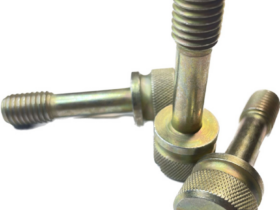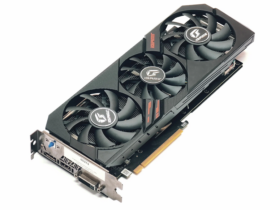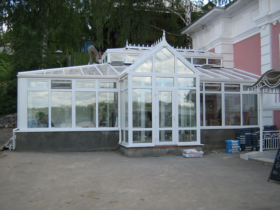Along with “bourgeois” and stoves, metal stoves for working out not only belong to the class of the simplest, compact and mobile furnaces, but also allow us to significantly save on expensive fuel, using waste oil instead. True, it is more advisable to use such a stove only for heating garages, workshops or greenhouses, but when the heating circuit is added to it, it can provide heat and living rooms. Moreover, the elementary of the structure completely allows you to weld the furnaces for working with your own hands — its drawings are an order of magnitude easier than that of traditional stoves, and even a novice welder to make it quite affordable.
The principle of action and design features
Fantastic cheapness (a stove in spent oil with your own hands can be collected literally from scrap metal) does not prevent this unique design from using the almost classic principle of pyrolysis. This makes it not only inexpensive in manufacturing and operation, but also highly effective. The three -chamber system provides 2 consecutive stages of burning waste oil — first of its vapors, and then re -burning of the released combustible gases. Thus, the efficiency increases significantly in the furnace, and the mass of toxic and harmful substances, on the contrary, decreases.
Structurally, the drawing of the stove in the spent oil contains the top three main chamber elements:
the lower, combined with a tank, a chamber with a low combustion temperature (the same hole in it serves to supply fuel, its ignition and adjustable air flow);
the central medium -trampressed chamber (which is a conventional wrapping of the pipe with holes in which the burning of oil vapors occurs);
upper — high -temperature, ending chimney — a camera that burns overheated gases with small particles contained in them, turned almost into pure smoke.
If a stove is made in waste oil, its drawings usually contain, at first glance, disproportionately a long chimney pipe (with such a compact design-more than 4-5 meters). In addition, the stove for working with your own hands implies only the strictly vertical location of the pipe-otherwise the chimney will quickly clog soot, which will lead to a sharp increase in suspension of harmful substances in the smoke due to a decrease in gravity and lowering the combustion temperature. This is especially true when installing a furnace in closed, slightly ventilated rooms — although it is in them that low ceilings sometimes forced to have a chimney at an inclination. In this case, it will be necessary to take care of its frequent cleaning — and it is imperative to supply a pipe output with a head with a head of protection against the entry into the system of atmospheric precipitation and dust.
Materials and tools
An ideal option would be to use medium thickness (4-5 mm or more) as a material for a furnace for a furnace. The use of various alloys is allowed-if only they were heat-resistant, especially at the location of the high-temperature upper chamber, the operating temperatures in the combustion zone of which sometimes reach 750-800 and even 850 ° C.
At the same time, the initial form of raw materials does not matter — it can be leaf iron and trimming pipes, and not necessarily the same section. For welding, slices and subsequent installation, we will need:
• already mentioned pipes and/or sheet metal;
• device for welding with a set of electrodes;
• Bulgarian and a couple of circles to it (grinding and cutting) — in extreme cases, a hacksaw for metal;
• corners (on the legs-stabilizers);
• drill with a set of drills;
• heat -resistant paint.
Manufacturing technological process
A stove for working out, the drawing of which consists of three joined zones, will require the following operations for the manufacture and connection of cameras.
Lower camera. It is a tank welded from two cuts of sheet iron, “bottom” and “lid”, and pruning the pipe playing the role of a side cylinder of 35-40 centimeters in diameter. The legs are welded to it, and in the lid (preferably removable — which will greatly facilitate the periodic cleaning of the container) 2 holes are cut out. The first of them-with a diameter of about 50-60 mm-is necessary for filling the oil. The second — about 100 mm in diameter — will serve to output oil vapors in the next chamber.
Middle Camera. It is a pipe strictly perpendicularly brewing on the second, wider hole, 3-4 times higher than its diameter. The camera is equipped with many drilled and uniformly distributed small holes with a cross section of about 1 cm. In the lid of this chamber, round, about 60 cm, a hole supplied with a barrier (for example, shifting to the side and fixed on one bolt) is also cut. It will adjust the air flow, and also intended for filling oil and ignition.
Upper camera. Structurally and in linear parameters, it is almost completely identical to the lower-but with a thicker lid (due to the maximum temperatures in this place of the furnace) and with a pair of holes located closer to the edges of the bottom and cover, respectively, on the sides opposite to each other. The first, in the bottom, is used to weld the pipe, in turn, which is planting on the middle chamber of secondary gas burning. The second serves to withdraw a chimney-and a little closer to it than to the pipe connecting the chamber, the senior partition is also welded on the lid.
The width of the middle chamber is inferior to the upper and lower, and the last 2 relative to each other along the axis is located with a displacement — therefore, a stove for working out, the drawing of which becomes like a sketch of uneven inverted dumbbells, requires adding stiffeners to the design. It becomes another thin, 2-3 cm, pipe or corner, welded with ends, respectively, to the lid of the lower and bottom of the upper chamber.
After that, the created stove for working with your own hands can be painted with fire -resistant paint and considered completely ready for operation — always remembering that its installation is prohibited in the immediate vicinity of easily igniting objects and structures.













Оставить коммент.